The total number of COVID cases in Michigan increased to 36,641 on April 24 (Chart 1), compared to 35,291 the day before; this was a 1,350 daily case increase. This was equivalent to 367 cases per 100,000 people (Chart 2) on April 24.
The total number of COVID cases reported to date in the City of Detroit reached 8,473 on April 24. Wayne County (excluding Detroit) had 6,934 cases, Oakland County had 6,804 cases, and Macomb County had 5,022 cases (Chart 3). The number of confirmed cases in Washtenaw, Livingston, Monroe and St. Clair counties combined totaled 1,842.
The daily data highlighted in these posts is from Michigan.gov/coronavirus, where data is updated daily at 3 p.m. Historical data was supplied from covidtracking.com, which republishes COVID data from the State.
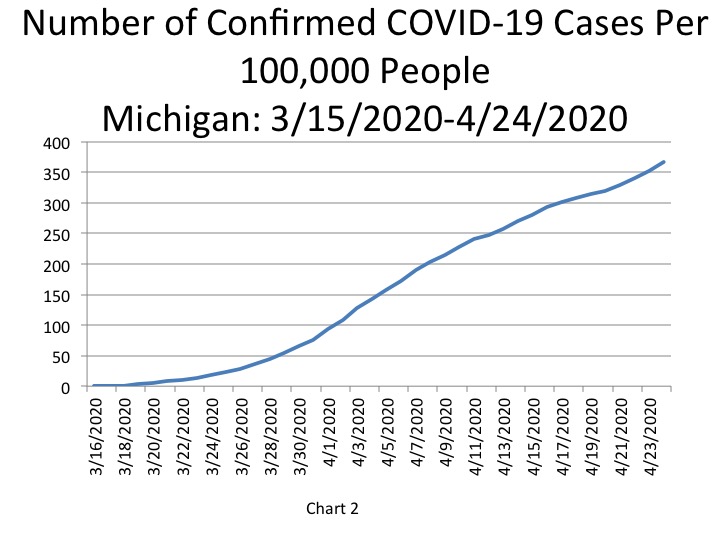
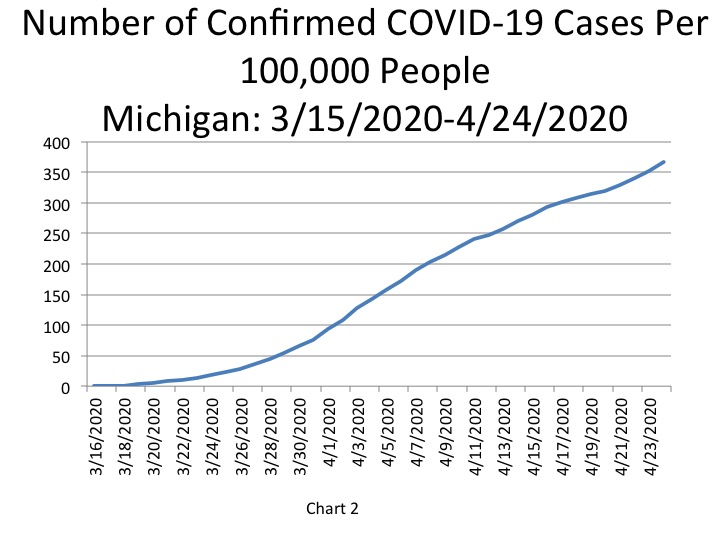
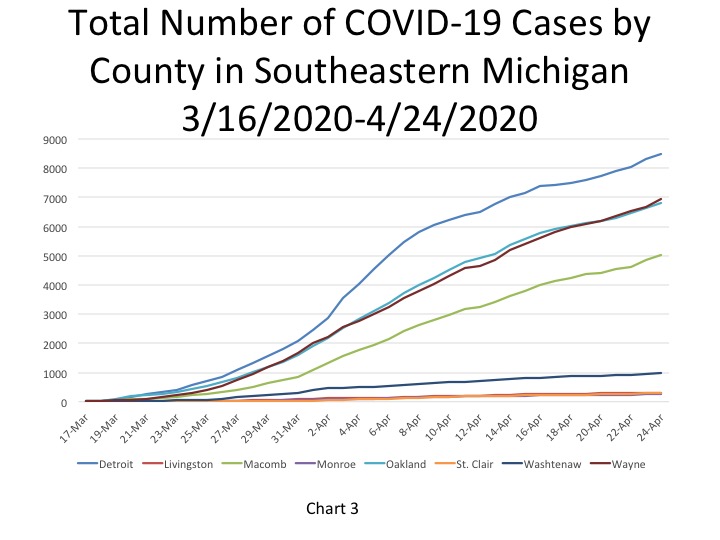
The City of Detroit showed total COVID per capita cases of 1,260 per 100,000 people on April 24, an increase from 1,236 the day before (Chart 4). Wayne County reported 1,031 cases per 100,000 people, and Oakland County’s cases per 100,000 was 1,012. Macomb County had 747 COVID cases per 100,000 people. Wayne County experienced the highest increase at 38 cases per capita between April 23 and April 24.
Chart 5 shows that the daily increases in the number of new COVID cases. Detroit and all the counties but Wayne County experienced a decrease in the number of new daily cases between April 23 and April 24. On April 24 Wayne County reported 257 new COVID cases and on April 23 142 new cases were reported. Oakland County reported 170 new COVID cases on April 24 while Macomb County reported 160 and Detroit reported 156. The high increase for Wayne County may be reflective of additional testing becoming available throughout the County.
Chart 6 follows a similar trend to Chart 5 in that Wayne County was the only to post an increase in the number of new COVID cases per 100,000 people. On April 24 there were 24 new COVID cases per 100,000 people in Wayne County; there were 13 new cases per 100,000 people the day before. On a per capita basis, Detroit had 23 new COVID cases per 100,000 people on April 24 while Macomb County had 14 and Oakland County had 18.
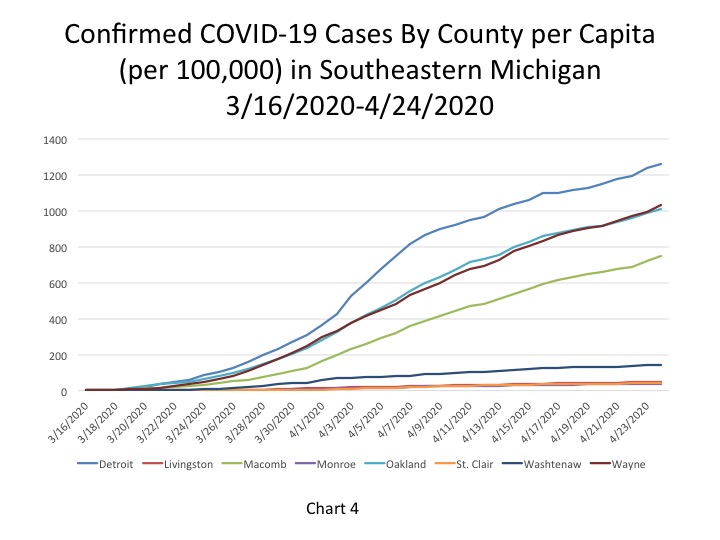
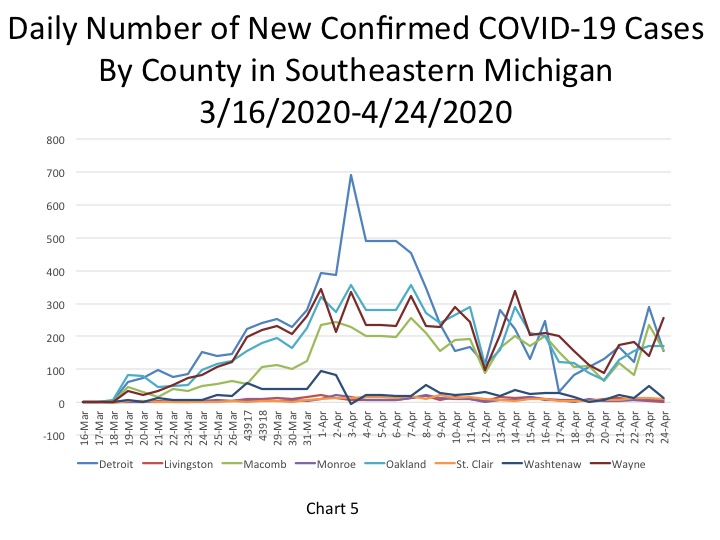
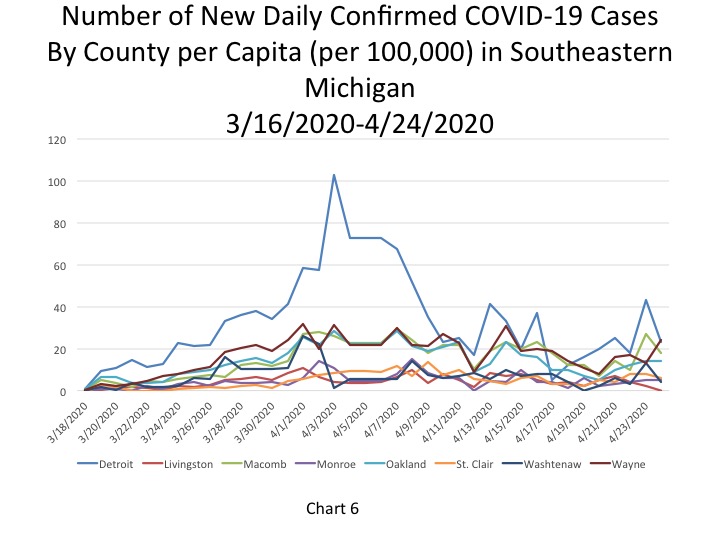
In addition to the raw data of confirmed cases, we also show the percent change in the number of cases reported day-to-day. In Chart 7 we see the raw data in the percent change, which shows that on April 24 the percent change from April 23 was 3.8 percent; this was a decrease from the percent change of 3.9 percent recorded on April 23.
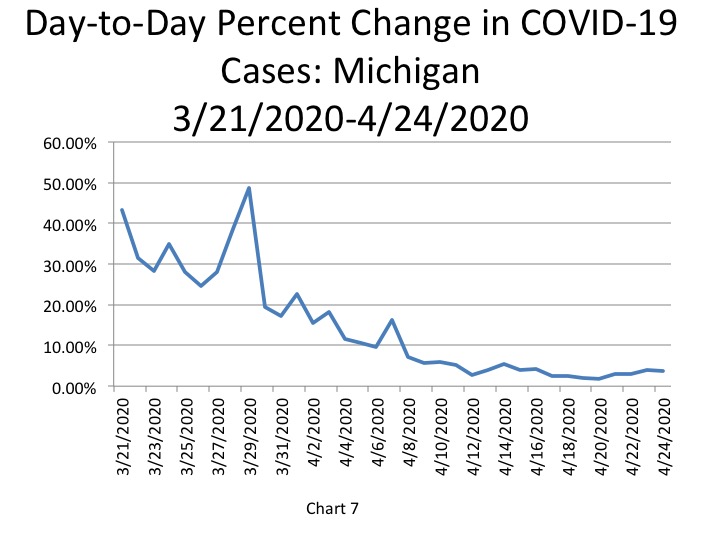
It was reported by the State of Michigan that on April 24 the total of COVID-19 deaths reached 3,085 (Chart 8). This was a 3.6 percent increase from April 23 (Chart 9). The 3,085 total deaths reported for April 24 was 108 deaths higher than what was reported on April 23 (Chart 10). The State of Michigan did not report any additional deaths as a result of comparing death certificates with positive COVID cases in the State’s database as they did on April 23.
Of the total deaths reported, Detroit had 40 new deaths , Wayne County had 21, Oakland County had 18 and Macomb County had 11. Each of these three counties and Detroit experienced a decrease in the number of new deaths between April 23 and 24; Washtenaw County was actually the only county to experience an increase (Chart 13). The addition of these new daily deaths brings the totals to the following: 839 COVID deaths in Detroit, 504 in Macomb County, 585 in Oakland County, and 613 in Wayne County (Chart 11).
The cumulative number of COVID fatalities per 100,000 people was 125 for Detroit, 91 for Wayne County, 87 for Oakland County and 75 for Macomb County (Chart 12).
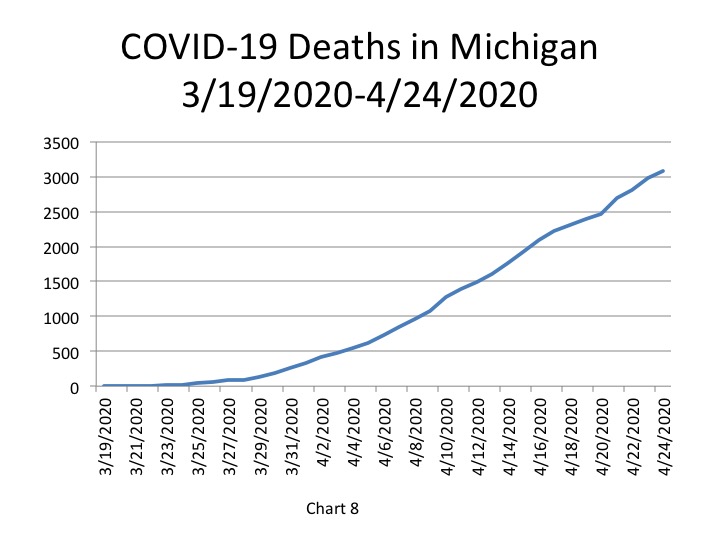
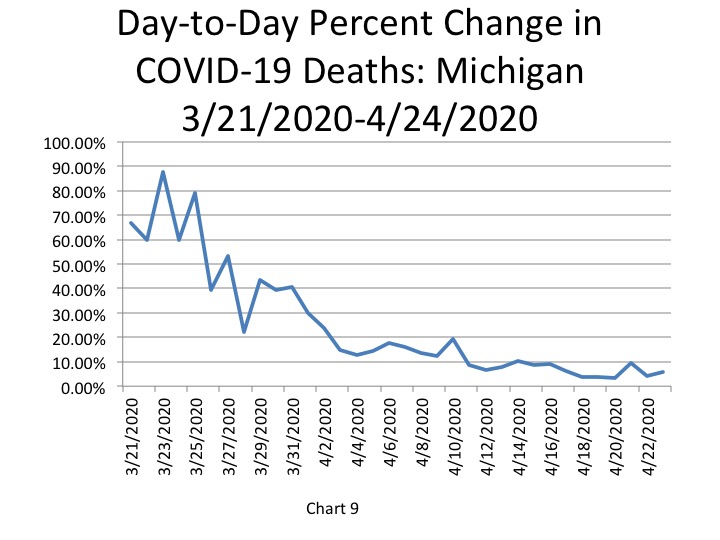
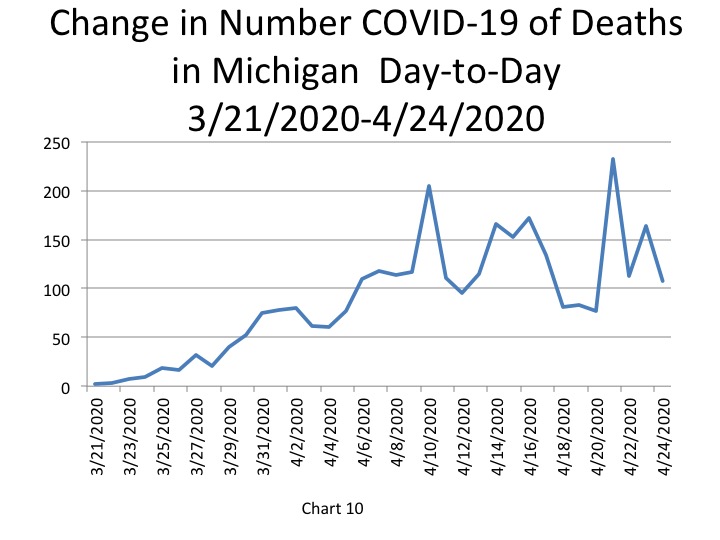
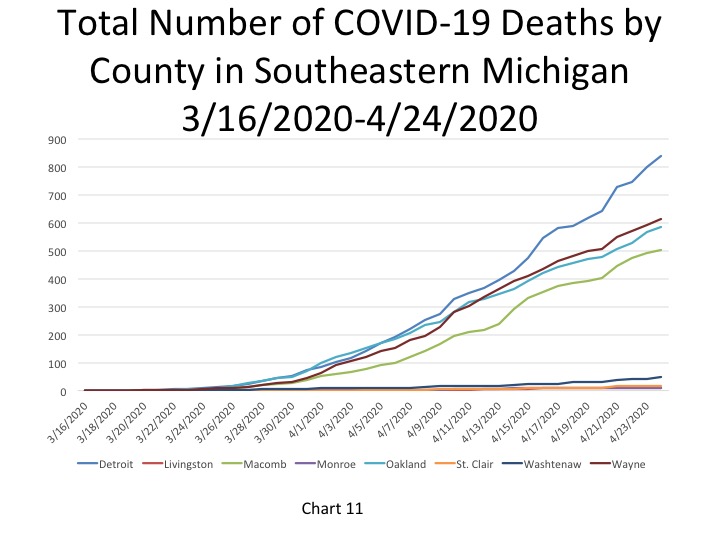
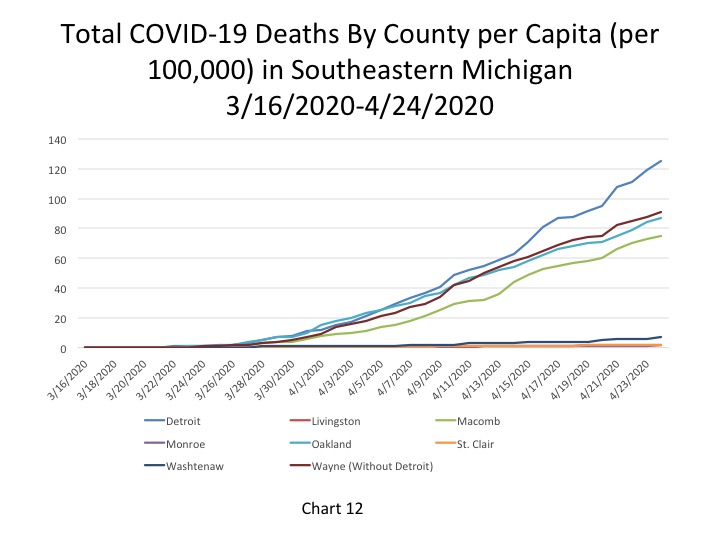
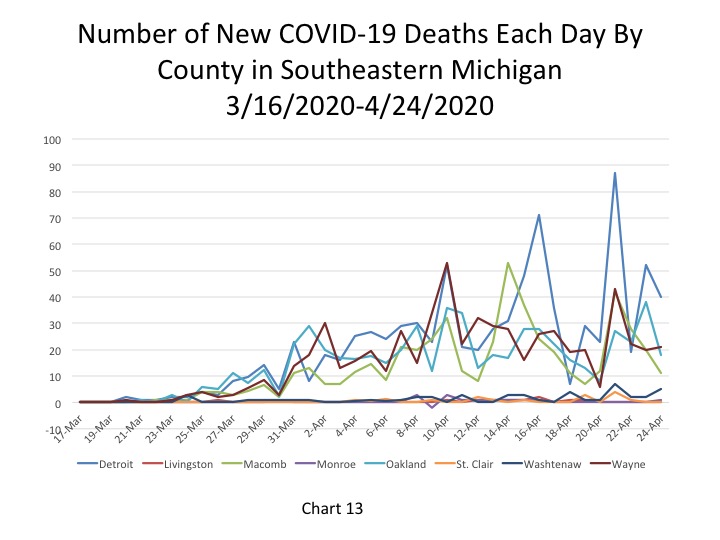
Charts 14 shows that the fatality rate for Michigan remained the same at 8.4 percent for the second day in a row. The fatality rates for Macomb County, Detroit and Wayne County all remained above the State’s rate on April 24. Macomb County’s fatality rate was 10.1 percent, Detroit’s was 9.6 percent and Wayne County’s was 8.9 percent. Washtenaw County experienced the highest increase in the fatality rate at 0.5%; Washtenaw County’s fatality rate was 4.8 percent on April 24.
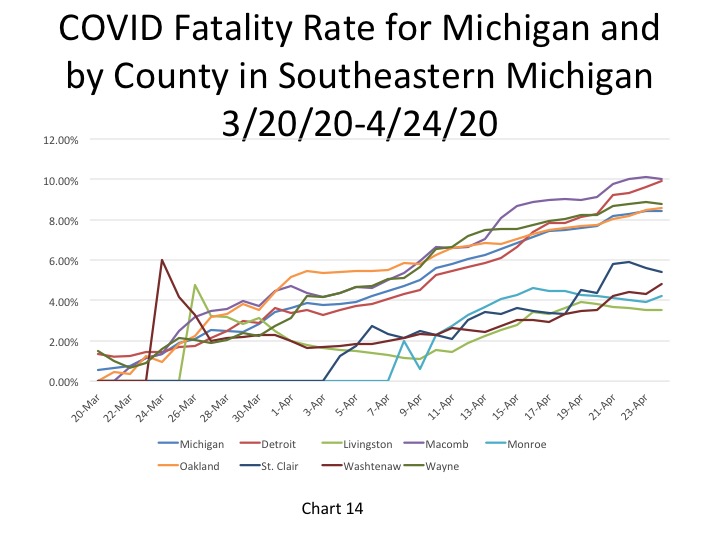
On April 24 Michigan toppled 3,000 COVID deaths, and Gov. Whitmer extended the Stay-at-Home Order but loosened up on some restrictions. Additionally, masks are now required to be worn inside public places. While remaining at home makes it feel like our daily lives are on repeat from one day to the next, the data does show that the virus continues to progress in Michigan, albeit at a slower rate.